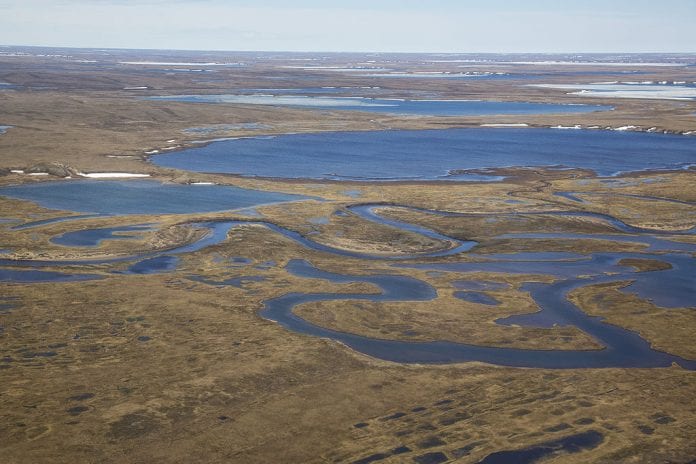A Biden administration record of decision on the National Petroleum Reserve Alaska has opened 11.8 million acres to oil and gas leasing, leaving another 11 million acres off limits for sensitive bird populations and the Teshekpuk and Western Arctic caribou herds.
The decision released on Monday, April 25, said that some lands closest to existing leases centered on the Greater Moose’s Tooth and Bear Tooth unit and Umiat would be included, while lands near Teshekpuk Lake would continue to be unavailable for such leases.
On Tuesday, April 26, Senators Lisa Murkowski and Dan Sullivan, both R-Alaska, issued statements sharply criticizing the Bureau of Land Management for reverting the NPR-A to the 2013 version of its Integrated Activity Plan. “This shortsighted decision closes millions of acres to responsible energy development, deliberately upending a careful balance in the management of the reserve and more broadly across Alaska lands,” they said. “The Biden administration’s move abandons the 2020 version of the IAP, which was developed in partnership with the North Slope Borough and in consultation with North Slope Tribes and Alaska Native Corporations. It comes mere weeks after President Biden pledged to “work like the devil to bring gas prices down.”
Murkowski added that “ it is simply shocking that the Biden administration can look at the world, and decide that Alaska is where ‘keep it in the ground’ should apply.”
“This decision will prolong the pain for hard-working Americans and tighten Vladimir Putin’s grip over our allies,” said Sullivan.
While the decision did not recommend any rivers for addition to the National Wild and Scenic River System, the federal Bureau of Land Management would manage the existing 12 suitable rivers to a number of conservation groups, including the Alaska Wilderness League, applauded the decision.
“The previous administration’s move to open more than 82% of the Reserve to oil and gas leasing failed to address the realities of the climate crisis or impacts to the region’s significant wildlife and wilderness values,” said Kristen Miller, conservation director for the league.
“Returning to the 2013 management plan is the right move in the near term and will restore protections to critical areas like Teshekpuk Lake,” she said. “Permafrost thaw is already damaging buildings, roads and pipelines and causing landslides and sinkholes across Alaska. New oil and gas development in the Western Arctic and the massive carbon pollution it would create would supercharge that thaw and place even more infrastructure at risk of environmental catastrophe.”
Alaska Native communities who have lived in and around the reserve have maintained a subsistence lifestyle for thousands of years based on its resources. The 23 million acre reserve is also critical habitat for migratory birds, brown bears, caribou, polar bears, walrus and other wildlife.
Signing on with the Alaska Wilderness League were Audubon Alaska, Defenders of Wildlife, Earthjustice, Friends of the Earth, Northern Alaska Environmental Center, Trustees for Alaska, The Wilderness Society and Conservation Lands Foundation.






